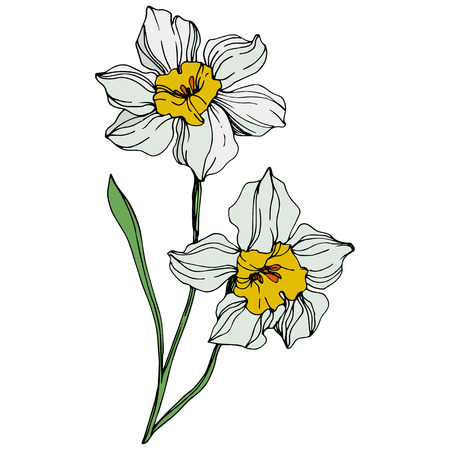The Fascination with Tulips in British History
When we stroll through Britain’s spring gardens today, it’s easy to take the vibrant tulip displays for granted. Yet, the story of how tulips became a cherished part of British horticultural tradition is a fascinating journey rooted deep in history. The tale begins not on British soil, but in the fevered atmosphere of 17th-century Holland, during an era famously known as Tulipmania. Dutch traders and collectors were so enchanted by these flamboyant blooms that single bulbs could fetch prices higher than a house! This craze soon crossed the Channel, capturing the imagination of British gardeners, artists, and even children, who marvelled at the rainbow of colours unfolding each spring. As tulips found their way into stately home gardens and city parks, they sparked a collective enthusiasm that turned planting and admiring tulips into an annual celebration. Over generations, this passion blossomed into a lasting tradition—one where families still gather to plant bulbs together each autumn, eagerly awaiting the joyful burst of colour when spring arrives. The journey of tulips from Dutch obsession to beloved British custom reminds us that sometimes, the simplest pleasures—like watching a flower unfurl—can connect us across time and inspire wonder in every generation.
2. Preparing the Family Garden: Choosing and Planting Tulip Bulbs
Bringing a touch of “Tulipmania” to your British garden starts with one of the most delightful family activities—selecting tulip bulbs together. This process is more than just gardening; it’s an opportunity for parents and children to connect, share stories about springtime traditions, and marvel at the rainbow of colours that tulips can offer. Whether you’re visiting a local garden centre or browsing bulb catalogues at home, let each family member pick their favourite variety—perhaps classic ‘Queen of Night’, cheerful ‘Apricot Beauty’, or playful ‘Parrot’ tulips. The act of choosing together sparks excitement for the months ahead and nurtures a sense of ownership over your shared garden project.
Choosing the Right Tulip Bulbs for British Gardens
Tulips thrive in Britain’s temperate climate, but success begins with selecting healthy, firm bulbs free from blemishes or mould. Consider varieties that bloom at different times for a prolonged show—from early March to late May. Here’s a simple guide to help your family choose:
| Tulip Variety | Bloom Time | Height | Colour Options |
|---|---|---|---|
| Single Early | March – April | 25-40cm | Red, yellow, pink, white |
| Darwin Hybrid | April – May | 45-60cm | Purple, orange, red, bicolour |
| Lily-flowered | May | 40-60cm | Purple, pink, red, white |
| Parrot Tulips | May | 35-50cm | Multicoloured fringed petals |
The Family-Friendly Planting Process
Once you’ve chosen your bulbs, autumn is the best time for planting in Britain—ideally between October and November before the frost sets in. Encourage little ones to help dig holes (about 15cm deep) using child-friendly trowels and let them space out bulbs roughly 10cm apart. Working together in the brisk autumn air connects your family to the cycles of nature, as you tuck each bulb into its earthy bed with hope for spring’s return.
Top Tips for Successful Tulip Planting in British Soil:
- Select a sunny spot: Tulips love sunshine and will produce their brightest blooms in well-lit areas.
- Ensure good drainage: If your soil is heavy clay, add some horticultural grit or organic matter to improve drainage and prevent bulbs from rotting.
- Plant pointed end up: Show children how to place each bulb correctly so shoots emerge easily.
- Add a layer of mulch: A light covering of bark chips or compost helps protect bulbs from severe winter chills.
- Create patterns: Involve everyone in arranging bulbs in swathes or clusters for an eye-catching display next spring.
This hands-on experience not only teaches valuable gardening skills but also weaves cherished memories and anticipation into every inch of soil you share as a family. As you plant each tulip bulb together, you’re sowing seeds of wonder that will bloom brightly when spring arrives across Britain.

3. Tulips in British Spring Displays: A Cultural Touchstone
Across the United Kingdom, tulips hold a cherished place in springtime displays, weaving their way into the hearts and traditions of families and communities alike. As winter’s chill gives way to gentle warmth, British homes often come alive with pots and vases bursting with vibrant tulip blooms. The simple act of arranging tulips on a windowsill or dining table signals the joyful arrival of spring—an invitation for children to marvel at nature’s palette and for parents to share stories of seasons past.
Tulips in Public Spaces: Parks and Stately Gardens
In parks and stately gardens from Cornwall to the Scottish Highlands, tulip beds are meticulously planned each autumn. When spring arrives, these spaces become living canvases awash with colour, drawing families out for weekend strolls and picnics beneath blossoming trees. Children run along pathways lined with tulips in every imaginable hue, learning to spot varieties with whimsical names like ‘Queen of Night’ or ‘Apricot Beauty’. Many National Trust properties host annual tulip festivals—events that blend horticultural wonder with treasured family outings.
Cultural Traditions and Community Spirit
The blooming of tulips is more than just a visual treat; it represents a seasonal ritual deeply rooted in British culture. Village fetes may feature “best tulip” competitions, while local schools encourage children to plant bulbs as part of gardening clubs, nurturing patience and care. In some towns, neighbours exchange surplus bulbs or cut flowers over garden fences—a quiet nod to community spirit and shared appreciation for spring’s bounty.
Tulips as a Symbol of Renewal
For many families, watching tulips unfurl each year becomes an anchor point in the cycle of life—a gentle reminder that even after long, grey winters, beauty returns. Parents often use this moment to inspire little ones: “Just as the tulip pushes through the soil,” they say, “so can we find new beginnings.” It’s this blend of tradition, togetherness, and inspiration that has cemented the tulip’s role as a true cultural touchstone in Britain’s springtime celebrations.
4. Involving Children in the Tulip Journey
Bringing children into the world of tulip cultivation is a wonderful way to nurture curiosity, responsibility, and creativity. Tulipmania isnt just about admiring blooms—its an opportunity for families across Britain to bond through hands-on gardening experiences and imaginative play inspired by these iconic spring flowers.
Making Planting Sessions Fun
Start by involving children in simple tasks such as choosing tulip bulbs at the local garden centre or market. Let them pick their favourite colours and shapes, which gives them a sense of ownership over the project. When planting, equip little ones with child-friendly trowels and gloves, and show them how deep to plant each bulb—typically three times the bulbs height.
Tulip Planting Guide for Kids
| Step | What Children Can Do |
|---|---|
| Select Bulbs | Pick out colourful bulbs at the shop |
| Prepare Soil | Loosen soil with a small spade or hands |
| Plant Bulbs | Place bulbs pointy end up, cover with soil |
| Watering | Give bulbs a gentle drink after planting |
| Decorate Markers | Create fun labels using popsicle sticks or stones |
Sparking Creativity with Tulips
Tulips are more than plants—theyre inspiration! Encourage children to observe the variety of petal shapes and colours as the bulbs bloom in spring. Use this as a launchpad for creative activities:
- Tulip Petal Art: Use coloured paper or paints to recreate favourite tulip varieties.
- Tulip Science Diary: Help your child keep a journal, noting changes each week as shoots appear and flowers open.
- Tulip Story Time: Invent stories about tulips travelling from Holland to British gardens or write poems inspired by their colours.
- Naming Challenge: Give each tulip patch a quirky name based on its colour or shape—think “Ruby Royals” or “Sunshine Swirls.”
Cultivating Family Memories
The journey from bulb to bloom is filled with teachable moments and laughter. By inviting children into the process, you’re not only growing beautiful spring displays but also sowing seeds of appreciation for nature that can last a lifetime. So put on your wellies, embrace a bit of mess, and let your family’s own tulipmania flourish!
5. Caring for Your Tulip Patch: Tips for a Blossoming Display
The British spring is famously unpredictable—one moment the sun peeks through, the next brings a gentle drizzle or a chilly breeze. Nurturing tulips in such changeable weather is an art, but it’s also a delightful opportunity to bond as a family and teach children about patience, care, and respect for nature. Here are some treasured tips to ensure your tulip patch not only survives but truly thrives, bringing cheer to your garden and warmth to your home.
Embracing Family Gardening Routines
Make tending to your tulips a cherished family ritual. Assign gentle tasks suitable for all ages—perhaps little ones can help check the soil moisture with their fingertips while older children can gently remove any fallen leaves or petals. This shared responsibility fosters teamwork and gives everyone a sense of pride when those first blooms appear.
Weather-Wise Watering
Tulips dislike soggy feet, especially in our damp British springs. Encourage your family to water them sparingly, ideally early in the morning so leaves dry before dusk. If rainfall has been generous, skip watering altogether; if there’s a dry spell, guide young helpers to give the bulbs a careful drink at their base.
Shelter from Spring Surprises
The wind can be brisk and spring nights unexpectedly cold. Show children how to protect emerging shoots with cloches or upturned jars during frosty spells—an act that can feel like tucking in a beloved pet at bedtime.
Feeding and Tidying Together
A sprinkle of balanced fertiliser as new growth emerges will help your tulips flourish. Involve everyone in gently spreading food around each plant, explaining how this helps create bigger, brighter blooms. Regularly removing spent flowers—a process called deadheading—also keeps your display looking neat and encourages more energy into next year’s bulbs.
Celebrating Progress and Patience
Take time as a family to observe changes—buds swelling, petals unfurling, colours deepening. Perhaps keep a garden diary together, noting weather patterns and bloom times. These small moments of wonder cultivate both tulips and precious memories, nurturing not just plants but lasting bonds between generations.
6. From Petals to Possibilities: Lifelong Lessons from Tulips
As we tend our tulip beds in Britain’s spring, there is so much more happening than just the nurturing of blooms. Tulips, with their vibrant colours and dignified presence, gently teach us and our children some of life’s most enduring lessons. Patience, for one, is written in every bulb tucked into autumn soil—a quiet reminder that good things truly do take time. Each chilly winter month draws out anticipation, making the first peek of green all the more thrilling come March or April.
Hope also takes root in this process. For generations, British families have gathered in gardens or allotments, passing on stories as they plant together. The act of waiting for tulips to blossom becomes a shared journey, one that mirrors life’s ups and downs—sometimes the weather turns or a bloom fails, but hope remains steadfast, buoyed by the promise of next spring.
And then there is joy—the simple delight when a child discovers a particularly striking ‘Queen of Night’ or when grandparents recall how their own parents once marvelled at the same fiery reds and buttery yellows. These moments spark heartfelt conversations, weaving family history with the changing seasons and fostering bonds across generations. The garden becomes a living classroom where little ones learn to cherish nature’s cycles while older hands remember their roots.
Tulips encourage us all to slow down and notice beauty in the everyday. Whether you’re sipping tea on a chilly morning beside a blooming border or sharing laughter over muddy boots and spades, each encounter with these flowers offers an opportunity for connection—not just with nature, but with one another. Through tulips, patience blooms into understanding, hope sprouts new dreams, and joy dances in every petal—lessons that last far beyond the fleeting days of spring.


